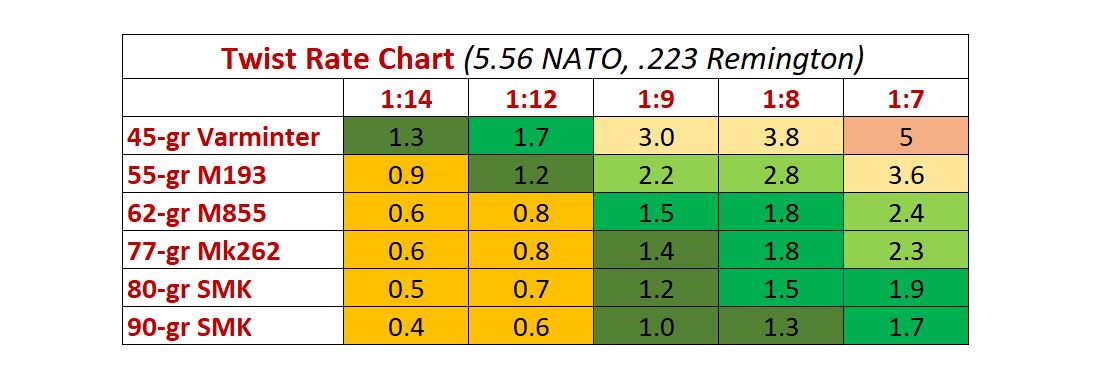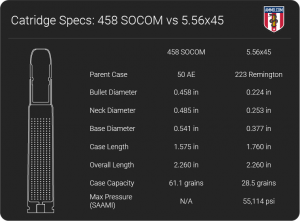Barrel Rifling Twist Rates Explained
BY Herschel Smith
Ideal twist rates produce a gyroscopic factor between 1.5 and 2.0.
Factors between 1.0 and 1.3 are marginally stable, but they’re generally considered too slow. Factors between 2.1 and 2.9 are fast, but stable and accurate. Factors above 3.0 are suitable, but not ideal. Climbing above 4.0 may cause over-stabilization of the round being fired, which can harm accuracy. The optimal twist rates for 5.56 and .223 loads are:
- 45-gr Varminter: 1:12 twist
- 55-gr (M193): 1:9 twist
- 62-gr (M855): 1:8 twist
- 77-gr (Mk262): 1:8 twist
- 80-gr Sierra Match: 1:7 twist
- 90-gr Sierra Match: 1:7 twist
The way I read the table, 1:9 twist rate is good for just about anything up to 77 grains. I wouldn’t shoot anything above that in 5.56mm anyway. Heavier bullets than that need to be .224 Valkyrie, 6mm ARC or 6.5 Grendel. I once thought that .224 Valkyrie was a flash in the pan, but occasionally I do see it at Academy and Cabella’s. It’s also possible to pick it up via Ammoseek.
I don’t have anything in that caliber and would not. I like the 6mm ARC too much to switch to something less effective and versatile.





